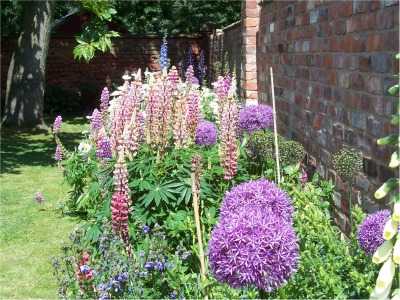Planting Wildflowers Helps Bees And Other Pollinators:
Ideas For Councils And Regional Governments
Planting wildflowers, to replenish much of the meadow and wildflower
habitat that has been lost over the years, is a very positive step we
can take to assist bees and other pollinators.
Wildflower habitat
loss has occurred in many countries, usually due to building
development and modern farming practices.
There is much we can do - if we have space, we can include a wildflower area in our gardens. Alternatively, we can add specific specimens into our flower borders.
However, we need to see change at government and council/local authority level too, in order to link up habitats between regions. The public are influential, so why not copy and paste the information below into an email or letter, and send it to your local council and/or politician?
Alternatively, you could tweet it to them, or use other social media channels. You could even ask your friends to do the same.
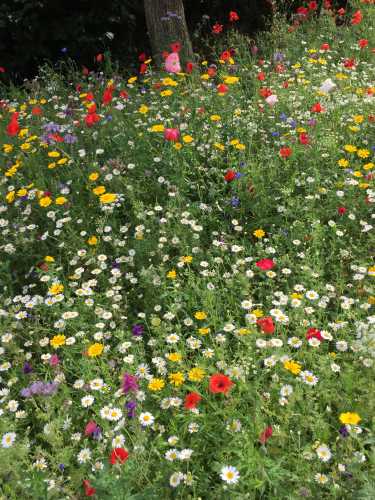
Pollinator Friendly Planting: Wildflowers Help Bees And Other Pollinators
The
plight of bees and other pollinators, especially wild species, has
been well-publicised. Whilst funding has been set aside for research
into the declines, certainly it is well accepted that the loss of wildflowers from the landscape is a significant contributor.
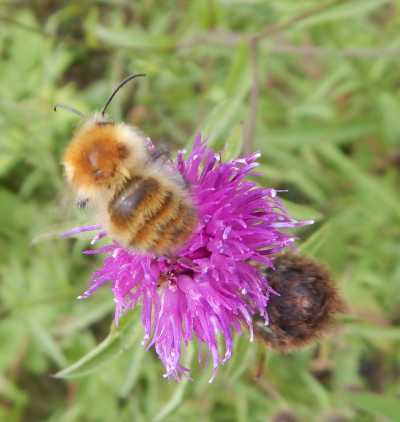
Here is a list of constructive steps government/council could take to help our pollinators and increase wildflower habitats. Some of these ideas are cost-effective and relatively simple to implement.
A number of ideas are listed below:
1. Pollinator
corridors can be created along highways and roadsides where possible, and indeed, this is happening in some areas.
This scheme could be extended and linked
up as far as possible, with more wildflower corridors along secondary
roads, waterside banks, alongside railways etc. Where appropriate, this
could be supplemented with the planting of suitable shrubs, hedgerows
and trees.
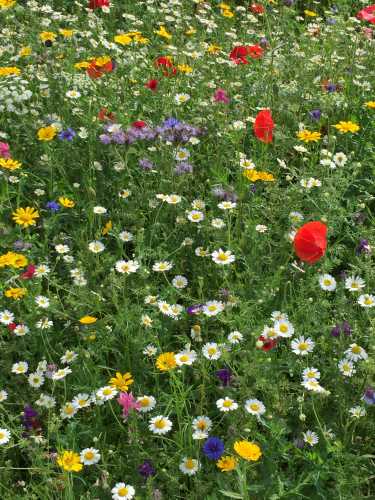 Planting wildflowers is a very positive step we can take to assist bees and other pollinators.
Planting wildflowers is a very positive step we can take to assist bees and other pollinators.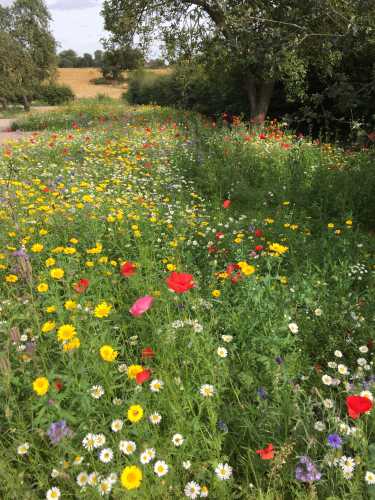 Wildflowers along with trees and hedgerows provide excellent pollinator habitats.
Wildflowers along with trees and hedgerows provide excellent pollinator habitats.
2. Convert more green spaces into additional pollinator-friendly wildflower habitats.
There are many green spaces requiring regular maintenance and mowing. Some of these may be positioned next to public buildings (especially in smaller towns and villages), and could be converted to wildflower spaces. Once created, wildflower areas are generally low maintenance, typically requiring mowing only twice per year.
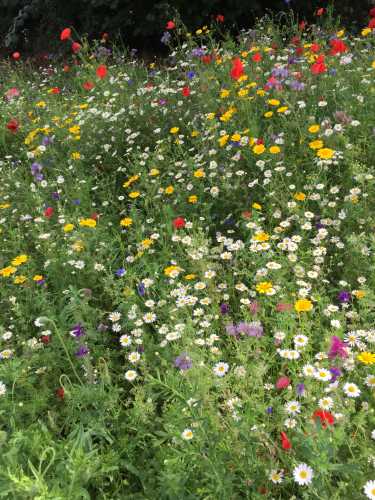 Once created, wildflower areas are generally low maintenance, typically requiring mowing only twice per year.
Once created, wildflower areas are generally low maintenance, typically requiring mowing only twice per year.
3. The annual re-creation of formal public planting schemes seems wasteful, and plants used are
rarely beneficial to pollinators.
These could easily be replaced with
attractive perennial wildflowers of greater benefit to wildlife, requiring much
lower maintenance and replacement cost, and without detracting from the
visual appearance of any planting scheme.
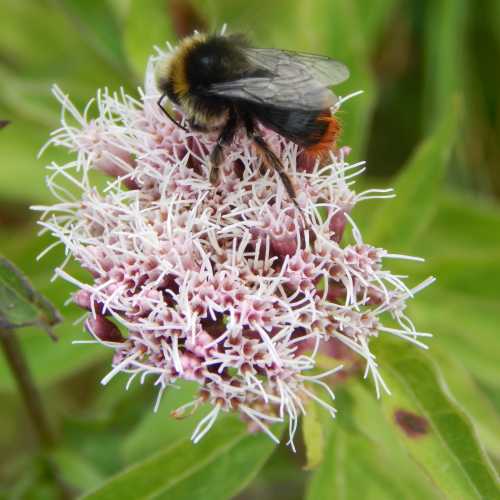 Bumble bee on hemp agrimony.
Bumble bee on hemp agrimony.
3. Some farmers are helping pollinators by planting wildflower strips, and I have seen some very impressive ones. This could be rolled out further, with farmers who are doing more, receiving additional benefits for doing so.
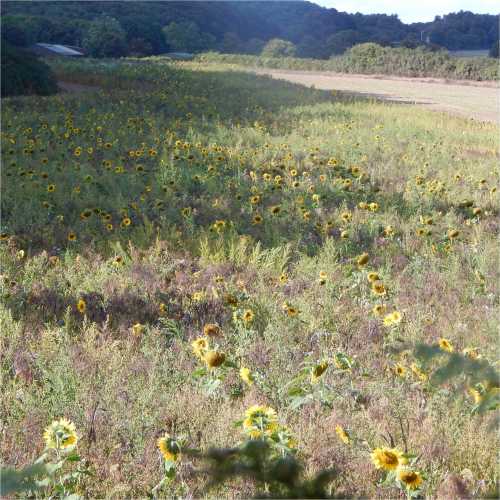 Pollinator verge in late autumn, with sunflowers seed heads ready to ripen and feed the birds.
Pollinator verge in late autumn, with sunflowers seed heads ready to ripen and feed the birds.
4. Regional councils could work together to link up habitats with native wildflower species. this would be beneficial to species because fragmented habitats can cause in-breeding among pollinators and thus
accelerate extinctions
Creating
more wildflower habitats for pollinators is a relatively simple and
cost effective way to help reverse the decline of pollinators.
It makes sense for government/councils to take positive, formal steps to ensure more wildflower habitats are created, in order to assist pollinators and create greater biodiversity as a whole.
If you found this page helpful or interesting, I'd really be grateful if you would share it with others - if not this page, perhaps another, such as Gardening For Bees.
Thank you so much :) .
